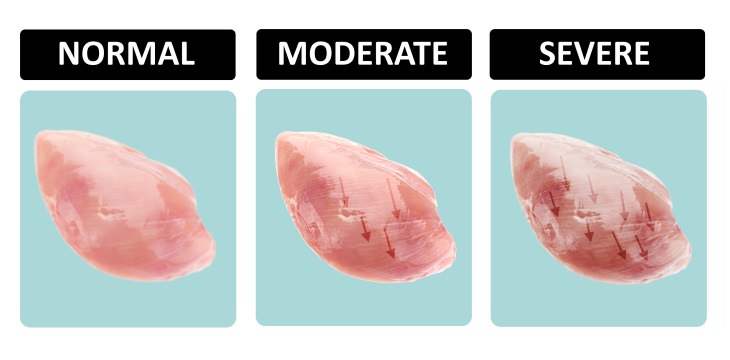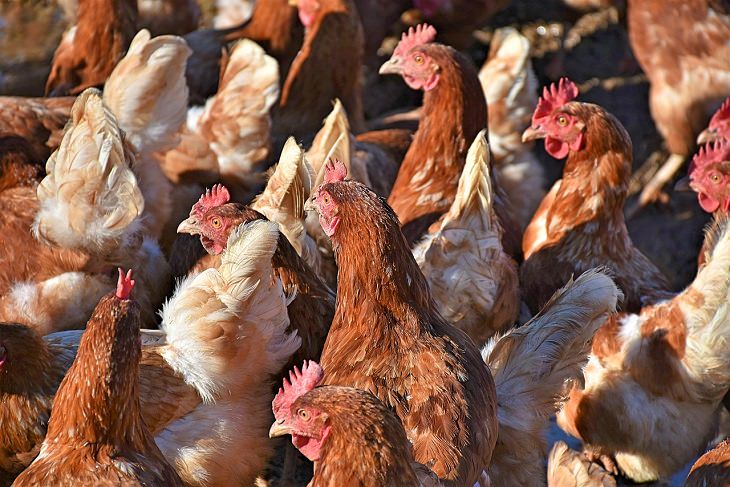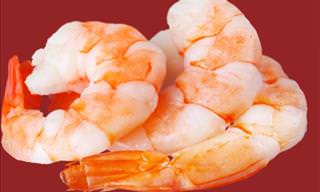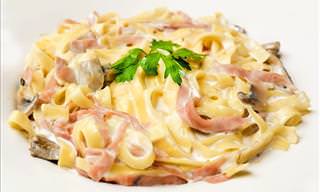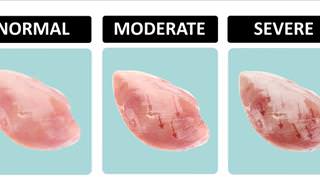Mass-produced food may be cheaper and more accessible, but at the same time, it’s often less nutritious. And we’re not only talking about fruit and vegetables, but also meat, and chicken breasts in particular. In fact, it turns out that cutting costs in poultry farming can dramatically alter the composition of the meat, rendering it less protein-rich and significantly fattier.
Which Chicken Breasts Are Less Nutritious?
It all began when people started noticing that some chicken breasts they bought at the store had white stripes. This was never seen in chicken meat 20 or 50 years ago, and even today, not all chicken meat showcases the so-called meat striping phenomenon.
Only recently, Italian scientists at the University of Bologna decided to sample chicken fillets with the goal to find out how striping influences the nutritional value of chicken breasts. After collecting a sample of 708 chicken fillets, they divided them into 3 categories (normal, moderately-striped and severely-striped) and measured the average protein, fat and collagen composition in these 3 categories.
And while chicken breasts are on the list of healthy protein-rich foods, the study concluded that the meat that contained the most stripes, which made up 12% of their sample, was significantly fattier (with some samples exceeding the normal range by 224%), contained less protein than expected and had more calories.
This is problematic, as the majority of consumers rely on the nutritional information they find on the packaging of the product or online to calculate their daily protein and caloric intake, and it turns out that the chicken that had more of these white stripes wasn’t as lean and rich in proteins as one would expect.
Apart from that, the scientists pointed out an increased level of collagen in the striped chicken samples, which can affect the chicken fillet’s texture, rendering it tougher when cooked.
Why Do Chicken Breasts Have These Lines?
The researchers believe that mass-manufacture and new breeding techniques are the culprits behind the white stripes. On one hand, farmers today breed chickens to grow up faster and build up more body mass, and on the other hand, we feed them a high-energy diet that urges them to gain even more weight.
Apart from that, the majority of chickens spend all of their lives in tight enclosures and don’t move a lot, which makes them have muscle disorders that are bound to affect the meat.
The result is enormous not fully-developed birds with muscle disorders that are mass-produced to meet the needs of an ever-growing market. In comparison, only 50 years ago, chickens grew to about half of the size they do today in twice the amount of time compared to the present. The chart below illustrates this tendency.
Are These Chicken Fillets Safe to Eat?
The researchers conclude that both the meat with moderate and severe striping is absolutely safe to sell and eat, but consumers should take into account the fact this meat is different in terms of its nutritional value than an average chicken breast. Apart from that, with time, meat retailers will take into account the difference in nutritional content and the packaging of meat products will reflect the true nutritional value and not outdated information.
A final thing to keep in mind when purchasing and cooking chicken breasts is the fact that chicken breasts with stripes don’t get infused with seasoning and marinades like normal chicken and have a tougher texture. This means that poaching or baking it won't be the best way, but you can still make it into chicken kievs and using it in a salad is still an option.
 Go to BabaMail
Go to BabaMail


